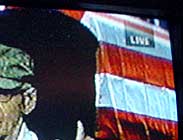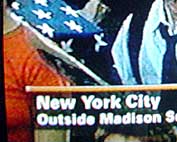|
Active
participant in and proponent of the Mexican Mural School
of new-realism.
Assisted David Alfaro Siqueiros on eleven of his murals
in Mexico City from 1948 to 1958.
One man shows in Mexico City (3), In the U.S. (4), Barcelona
(3)
Painted murals in Jersey City and in the Village Vanguard
nightclub, New York City.
Wrote the book Siqueiros
His life and Works, International Publishers Co.
-1994 ISBN 0-7178-0709-6
Wrote a chapter for the following
Spanish language publication: "David Alfaro
Siqueiros Tal Y Como Lo Conocí" Philip Stein. Otras
Rutas Hacia Siqueiros, Instituto Nacional de Bellas Artes,
1996, Mexico, D.F.
Was
written about in the following Spanish language publication:
"Philip Stein Estaño, Nueva York-Mexico-Barcelona.
Del Taller de Siqueiros a hoy." Llum Torrens, Universidad
de Barcelona, Tomo I 1992 El Arte Español en Epocas de Transicion,
Congreso Español De Historia Del Arte (9.,1992. Leòn).
_______________________
Born
in Newark, New Jersey, USA on February 5, 1919. Early
on his interest in art was very strong. Taught himself oil
painting in his early teens and upon finishing high school
went to work as an apprentice in a New York scenic studio,
mainly cleaning up, menial labor, washing the brushes and
preparing the palettes for the journeymen artists painting
scenery for the New York stage. At this time he was attending
evening art classes at Pratt Institute in Brooklyn and at
the New School for Social Research in Manhattan.
During
World War II, he served in the the US army for 3 years and
10 months. Serving as a meteorologist in the European Theater
of Operation, first with the 8th Air Force and then with
the 9th Army, moving across Northern Europe until they met
the Soviet Army at the Elbe River in Germany. Having managed
to scrounge art supplies and painting materials in the wreckage
of Germany he devoted what time he could to do some paintings
on the move. Returning
to the US in November 1945, he resumed work in the scenic
studios now with a student artist union card and returned
to night art classes at the New School, with the benefit
of the GI educational bill. In early 1946 with his wife
Gertrude, he moved to Los Angeles, California. There he
went to work in the movie studios with an upgraded union
card as an apprentice artist. Here he attended the Chouinard
School of Art
in the evenings.
The
Hollywood strike of 1947 brought work in the studios to
a standstill. Stein was able to design and paint scenery
for the opera Boris Godounow, presented in Hollywood
that year. It would be his last work in Hollywood. Early
in 1948 Stein decided to make use of the time he had left
to study with the GI Bill and he traveled to Mexico. It
was there that he enrolled in The School of Fine Arts of
San Miguel de Allende, and later in the school of the Instituto
de Bellas Artes in Mexico City. Stein discovered the Mexican
Mural Movement and joined the mural team of David Alfaro
Siqueiros, spending the next ten years working with Siqueiros
on his major murals in Mexico City from 1948 to 1958. Siqueiros
found Philip Stein's name difficult to pronounce, and so
took to calling the artist, Estaño. The name stuck and has
been used by the artist ever since. Estaño first exhibited
his own unique paintings in Mexico City in 1953.
|



